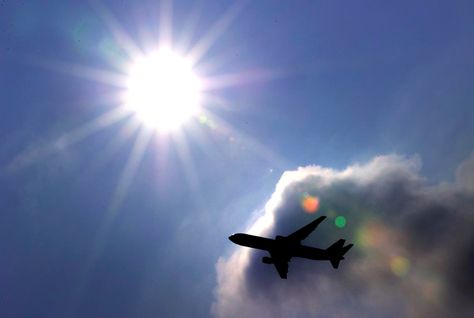Middle Eastern airlines carried 23.4 percent more passengers in February compared to the same period the previous year as carriers recovered from the impact of the Arab Spring, the International Air Transport Association (IATA) said Tuesday.
Capacity growth for regional carriers also reached 16.1 percent during the month, the industry body said in its monthly round up on global air traffic.
In its report, IATA said the year-on-year passenger volume increase in the region was "distorted by the poor performance in February 2011", the month when political unrest across the world began gaining momentum.

| Advertisement |
However, IATA added that "the region is now fully recovered" from the impact of the Arab Spring.
Regional airlines were hit hard by the protests that swept across the Arab world last year and toppled leaders in Egypt, Tunisia, Libya and Yemen.
Dubai’s Emirates Airline in November reported a 76 percent slump in first half net profit for 2011 as rising fuel costs and regional unrest squeezed margins.
Similarly, low-cost carrier Air Arabia in November blamed a 26 percent slump in third-quarter profits on regional political turmoil.
On a global basis, the IATA report for February showed that global passenger traffic increased 8.6 percent while overall cargo demand rose 5.2 percent. IATA warned the overall outlook for the aviation industry remained weak amid rising fuel costs and weak economic conditions.
“The outlook is fragile. Improvements in business confidence slowed in February. This will limit the potential for business class travel growth and it implies that an uptick for cargo is not imminent,” Tony Tyler, director general of IATA, said in a statement.
“At the same time, airlines trying to recoup rising fuel costs could risk reduced volumes on price sensitive market segments. Weak economic conditions and rising fuel costs are a double-whammy that an industry anticipating a 0.5 percent margin can ill-afford,” he added.
The industry body last month revised its profit forecast for Middle East carriers from US$300m to US$500m, bucking a worldwide trend as fuel costs impact the industry. IATA said the financial performance of Middle Eastern airlines was already better than previously expected in 2011.
It added that in the passenger business, load factors have improved by a slowdown in the introduction of new capacity, and long haul markets have been relatively robust.









 Search our database of more than 2,700 industry companies
Search our database of more than 2,700 industry companies









